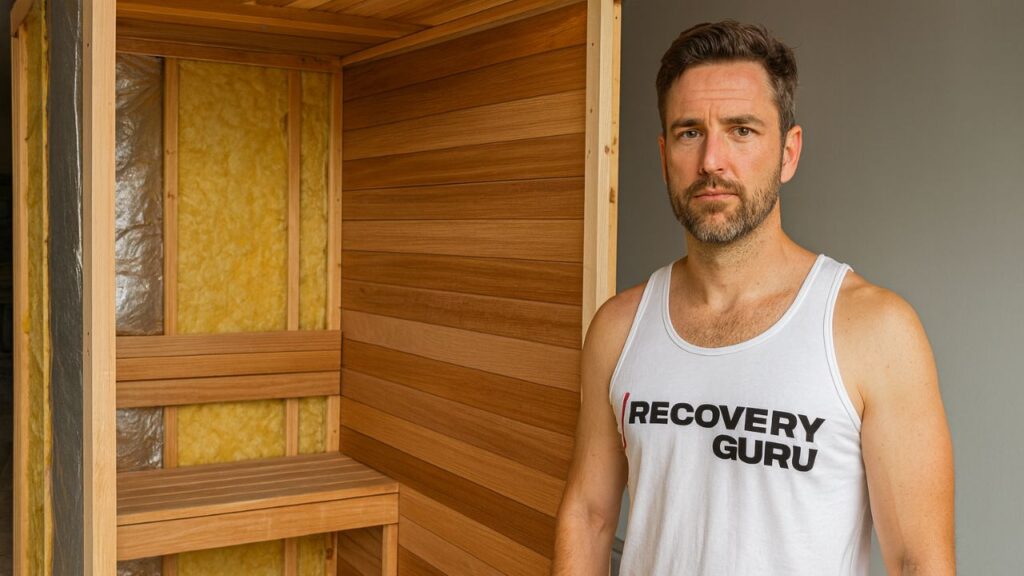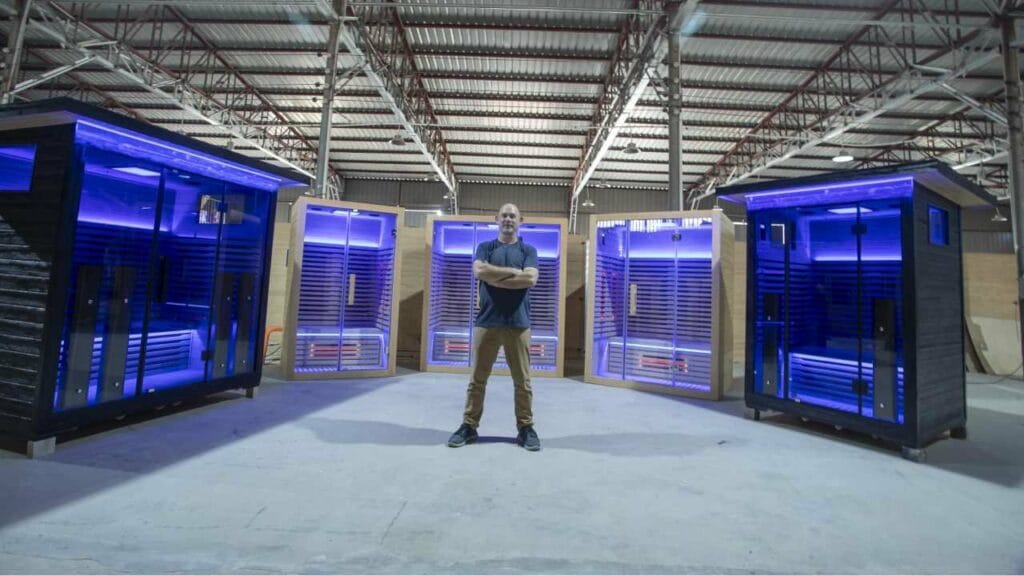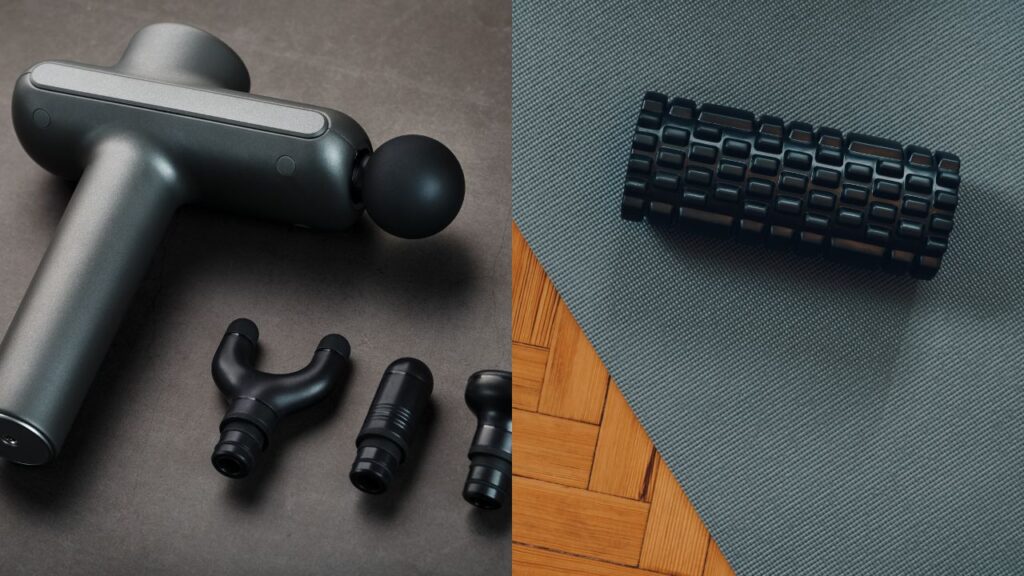Zone 2 Training: How To Do It and Why It Helps Build Exercise Capacity?
We include links to products we think are useful for our readers. If you click and buy a product through one of the affiliate links on this page, we may earn a small commission.

Zone 2 Training
Most endurance athletes train with a specific goal in mind. To achieve these goals, they use different training methods. Zone 2 is one such strategy used by athletes. Let’s take a look at why.
If you asked most people to name a popular exercise method, they’d answer with HIIT or “high-intensity interval training.” You’d be hard-pressed to find many people who respond with “Zone 2 Training”. If you’re a true fanboy or girl, you may have heard recent discussions about zone two training on the Huberman Lab podcast with Dr Andy Galpin.
HIIT is a training modality in which you work at high intensity for short periods, followed by a rest period. This is then repeated for specific sets and/or time. HIIT is great for the time-crunched and provides a solid workout in under 60 minutes, but it also comes with high strain.
Enter Zone 2 training. In the past few years, Zone 2 training has re-emerged as the leading training method for endurance athletes across almost every sport. From running to cycling and swimming to ultra-marathon, Zone 2 training is leading the way. The best part is, you can also incorporate your beloved cold plunge therapy safely into your post-zone 2 training regime without affecting your gains.
Zone 2 training should be performed at between 60 and 75% of your maximum heart rate for 30 and 60 minutes. Unfortunately, many aspiring athletes are unaware of the benefits of training in Zone 2 because their prescribed programs almost always overlook it. This is not for lack of technology, because there are a multitude of devices out there that allow you to easily and accurate track HR data for exercise and sleep tracking.
I’ve seen it repeatedly where young athletes believe the only way to improve is by going 100% all the time; however, this only leads to overtraining and serious injury. Each of the five heart rate zones has its physiological and metabolic benefits, but today we are looking specifically at Zone 2 and how it can boost your health and fitness. (1)
The Five Training Zones

Credit: Whoop
Training zones are used to provide coaches and athletes with an accurate way of tracking exertion and the energy systems being utilized by the body. There are typically five zones, although some coaches use a 6th; here, however, we are using the “5 zone model.”
Zone 1
Fat is the primary energy source
50-60% of Max Heart Rate (MHR)
Perceived exertion is “very light”
Zone 2
Fat and carbs are the energy source
60-70% of MHR
Perceived exertion is “light to moderate”
Zone 3
Fat and carbs are the energy source
70-80% of MHR
Perceived exertion is “moderate to hard”
Zone 4
Carbs are the primary energy source
80-90% of MHR
Perceived exertion is “hard to very hard”
Zone 5
Carbs are the primary energy source
90-100% of MHR
Pereceive exertion is “very hard”
It’s clear to see that as you increase your level of training intensity, the energy system your body uses slowly moves from fats to carbohydrates. Zone 1 and 2 utilize fats, while Zones 3,4 and 5 use carbs as their primary energy source.
What is Zone 2 Training?
Zone 2 training represents any exercise or sporting activity that is performed between 60 and 75% of your maximum heart rate or MHR. As you’ve just seen, there are 5 “zones,” with Zone 2 being at the easier end of the spectrum. Zone 2 training should feel relatively “light” and performed at an intensity you can comfortably keep for at least 30 minutes.
Experts suggest that an easy and reasonably accurate way to determine if you are in Zone 2 is whether you can do the activity while holding basic conversation without losing your breath. Zone 2 training is an effective training zone to help build endurance, burn fat and maintain long bouts of movement.
Many athletes will use Zone 2 training to make up 70-80% of their training regime as it allows for exceptional cardiovascular conditioning benefits without the intense stress of HR training which generally has much longer recovery period requirements to follow.
How To Find Your Zone 2 Heart Rate?

Tracking HR with Whoop
The most common way athletes track their zones is by using their heart rates. With Zone 2, we need to ensure our heart is beating between 60 and 75% of our maximum heart rate. For instance, if your MHR is 180, then Zone 2 would be between 108 and 135 beats per minute.
We find the easiest and most accurate way to track HR is with the Whoop 4 or similar fitness tracking device.
Read our full Whoop 4 Review here
There are a few different ways to calculate Maximum Heart Rate. An old but incredibly effective way to find your MHR is to either ride a stationary bike or run a treadmill. Simply increase the speed every 2 minutes until you can no longer maintain it; that will be your maximum heart rate.
You can also use the standard formula based on your age which is:
220 minus your age.
For example, if you’re 40 years old, your MHR would be 180. This age-old method isn’t that accurate, but it gives beginners a ballpark figure to start with. (2)
A more reliable way to track your heart rate zones is by using a wearable tracking device like those from Whoop, Garmin, and Polar. Heart rate technology has progressed in leaps and bounds, providing elite athletes with much more accurate and reliable data.
This data helps coaches track performance and effort and design, implement and modify training plans and schedules.
Five Health Benefits Of Zone 2 Training
Training in Zone 2 has been shown to tremendously benefit our physical, mental, and emotional well-being. Below we take a look at five of the ways training in Zone 2 can boost your fitness and your mental health.
1. Boost Mitochondria And Its Efficiency
Out of the five heart rate zones, Zone 2 is responsible for stimulating mitochondria to produce adenosine triphosphate (ATP). Zone 2 boosts the number of mitochondria and their efficiency, meaning the more you train in Zone 2, the better you become at burning fat. Additionally, Zone 2 training reduces your risk of developing severe health conditions like cancer and obesity. (3)
Zone 2 training boosts both the number and efficiency of mitochondria, the powerhouses of cells. By increasing mitochondrial density and improving their ability to generate ATP, Zone 2 training enhances your body’s overall energy production. This means that the more you train in Zone 2, the more efficient your body becomes at burning fat for fuel, which is crucial for long-term energy management and endurance.
In addition to its impact on mitochondrial function, Zone 2 training plays a significant role in reducing the risk of developing severe health conditions like cancer and obesity. Regular Zone 2 exercise promotes metabolic health, improves insulin sensitivity, and supports cardiovascular function, all of which contribute to a lower risk of chronic diseases. It helps maintain a healthy weight, reduces body fat, and supports overall metabolic health.
2. Go Faster And Go Longer
Regularly training in Zone 2 means you’ll be able to go faster for longer periods with the same perceived exertion. Pro athletes spend most of their training time in Zone 2, compared with amateurs who spend most of their time at the higher end of levels 3 and 4.
Zone 2 is “counterintuitive,” which makes training difficult; however, once you get the hang of it, your ability to increase your workload improves tremendously. Your ability to burn fat gets better and better, with no need to tap into your carbs for energy.
3. Boost Your Cardio Health
Apart from boosting your mitochondria and making them more efficient, Zone 2 training also offers significant benefits for heart and blood health. In short, your heart strengthens, requiring less work to pump and circulate blood. The vascular system also operates more efficiently, allowing oxygenated blood to travel without restriction.
A stronger heart means your resting heart rate will lower and your fitness performance higher. For instance, I train in Zone 2 between 4-5 times a week for 60-90 minutes each time, and my resting heart rate is about 42. Let’s hope that translates into me reaching my goal of living until 120. (4)
4. Reduces Injury And Quicken Recovery
Because Zone 2 training places limited demands on your body, you’re able to increase your workload with minimal risk of injury. One of the benefits I love about exercising in Zone 2 is that it’s easy to back up training days and keep the same intensity; this makes training more productive and, quite frankly, a lot more fun.
Zone 2 is ideal for circulating blood and delivering essential nutrients to your muscles, bones, and joints, helping quicken the repair and recovery process. Zone 2 also serves as “active recovery” from those more brutal training sessions. (5)
5. Feel Better
Regular bouts of low-intensity fitness have been shown to significantly boost our cognitive and emotional health and well-being. Training at low intensity is an excellent way to clear the mind of the day’s troubles helping to relieve stress and anxiety while improving our mood and outlook on life. (6)
Training at low intensity is an excellent way to clear the mind of the day’s troubles, helping to relieve stress and anxiety. The rhythmic and repetitive nature of these activities promotes a meditative state, allowing the mind to relax and unwind. This not only reduces stress hormones but also encourages the release of endorphins, often referred to as “feel-good” hormones, which naturally elevate mood and create a sense of well-being.
Furthermore, regular low-intensity exercise has been linked to improved cognitive function. It enhances blood flow to the brain, supporting better memory, concentration, and mental clarity. By incorporating these activities into your daily routine, you can experience sharper focus and a more positive outlook on life.
The consistent engagement in low-intensity fitness also fosters a sense of accomplishment and control, contributing to enhanced emotional resilience. This can be particularly beneficial for individuals dealing with depression or anxiety, as it provides a constructive and proactive way to manage their mental health.
Best Ways To Train In Zone 2
Training in Zone 2 can dramatically increase your fitness performance, boost your cardiovascular health, and even reduce stress and anxiety, but these changes don’t occur overnight. Rather, these physiological adaptations take months and even years, which is all the more reason to start today.
Unlike HIIT, which requires a good amount of base fitness to get the most out of it, Zone 2 training is appropriate for any fitness level, meaning you can start today. Simply use one of the guidelines above to find your zone; it’s that simple.
Any Exercise Will Do
So, what kind of exercise and activities can you perform to get the most out of Zone 2 training.? The only limiter here is your imagination.
For instance, I’m a road cyclist and spend 80% of my time in the saddle performing Zone 2 training. Although cycling places a great demand on the body, it’s still referred to as a “low-impact” sport meaning when you combine it with Zone 2, the benefits are monumental.
But obviously, it doesn’t have to be cycling. There’s an unlimited number of exercises that you can do that are great for zone training.
Exercise Suggestions for Zone 2 Training
Cycling
Stairclimber
Stationary bike
Power walking
Jogging or running
Swimming
Rowing and even
Weight lifting
Many athletes, pros included, find adjusting to Zone 2 training difficult because it’s generally much easier than what they’re used to. Because of that, one of the biggest mistakes athletes make is pushing too hard into Zone 3.
Luckily, there’s nothing wrong with going into Zone 3, but if you feel your intensity increasing, back off a bit. If you’re running, that could mean walking for a few minutes to back into Zone 2.
Don’t Neglect Your Other Zones
Many athletes think that performing in Zone 2 means they won’t be able to perform or combine it with the other zones, such as Zone 3 or 4. However, when it comes to Zone 2 training, nothing could be further from the truth.
Because training in Zone 2 places limited physical demands on the body, you’re actually able to enjoy other sports you might like, such as tennis or basketball. And, because you don’t need as much time to recover, you can train in Zone 2 without tapping into your energy stores.
It’s important to note that 10 or 15 minutes is not going to be enough to see any tangible physiological adaptations take place. Sessions in Zone 2 should be at least 30 minutes long, staying in Zone 2 the entire time. You do not want to be “in and out” of Zone 2 because each time it happens, you’re basically starting the session again.
One final reminder; if you’re tracking Zone 2 with the talk test, ensure you’re using the test corresponding to the activity you are performing. For instance, your perceived talk test while cycling might be completely different from running.
Frequently Asked Questions
What is the best exercise for Zone 2?
There are five zones for measuring heart rate that is pretty much universally accepted, although the zones can vary slightly. Zone 2 is probably the most popular because it boosts heart health and fitness and can be done by performing any type of exercise. You can power walk, jog, run, ride, swim, or do any other activity that gets your heart pumping.
Zone 2 is probably the most popular of these zones because it effectively boosts heart health and overall fitness while being accessible to a wide range of fitness levels. One of the greatest advantages of Zone 2 training is its versatility. It can be achieved through various types of exercise, making it easy to incorporate into almost any fitness routine.
You can power walk, jog, run, ride a bike, swim, or engage in any other activity that gets your heart pumping within the 60-70% range of your maximum heart rate. This moderate intensity not only enhances cardiovascular health by strengthening the heart and improving blood circulation, but it also promotes efficient fat metabolism, aiding in weight management and endurance building.
The appeal of Zone 2 lies in its sustainability. Because the intensity is moderate, it’s easier to maintain for longer periods, making it ideal for building a solid aerobic base. This foundation is essential for overall fitness and can help prepare the body for more intense workouts in the higher heart rate zones.
How long should I exercise in Zone 2?
The answer to this question varies greatly depending on who you listen to. But typically speaking, beginners should aim for three 20 minutes sessions weekly before working their way up to four or five 60 minutes sessions. Beginners must be patient and work to increase their zone 2 training duration incrementally. E.g., 20 min to 30 min, 30 min to 40 min, and so on.
For instance, after a few weeks of consistent 20-minute sessions, beginners can aim to extend their workouts to 30 minutes. Once this new duration feels manageable, they can further increase to 40 minutes, and eventually work their way up to four or five 60-minute sessions per week. This incremental approach helps prevent injury, reduces the risk of burnout, and ensures that the body adapts appropriately to the increased physical demands.
Patience is key in this progression. It’s important to listen to your body and not rush the process. Incrementally increasing the duration of Zone 2 training allows for sustainable progress and long-term adherence to the exercise routine. Additionally, incorporating rest days and varying the types of exercises (such as walking, cycling, swimming, etc.) can help keep the workouts enjoyable and prevent monotony.
By gradually increasing the length and frequency of Zone 2 sessions, beginners can build a strong aerobic base, enhance their cardiovascular health, and enjoy the numerous benefits of consistent exercise without overexertion. This steady progression sets the stage for a lifelong habit of physical activity, supporting overall health and well-being.
What are the benefits of training zones?
Training within heart rate zones has several benefits for elite athletes and regular fitness buffs, especially beginners to the fitness scene. Training in the heart rate zones can help to improve your aerobic fitness, increase your VO2 max, boost athletic performance, reduce injury, quicken recovery, and boost your mood. It also helps to take the guesswork away.
Conclusion on Zone 2 Training
Simply put, Zone 2 training isn’t sexy, but its gets results. Unlike other popular and cult-like training methods, such as HIIT, Zone 2 is “unspectacular” but lays the foundation for your fitness progress. Easily track your HR zone using a fitness tracking device which gives you live feedback on your HR like the Whoop 4 does.
The physical benefits of training in Zone 2 are improved heart health, increased aerobic capacity, reduced injury, and quicker recovery. Furthermore, regular exercise in Zone 2 has been shown to boost mood and improve the outlook on life. One overlooked benefit of Zone 2 training is you can still chat, making it ideal for exercising with family or friends.
Remember, though, Zone 2 and the other zones can fluctuate depending on factors such as how you track it and your physical health condition.
All in all, Zone 2 should make up between 70-80% of your total training time.
References
1. https://www.ncbi.nlm.nih.gov/pmc/articles/PMC6355121/
2. https://health.clevelandclinic.org/exercise-heart-rate-zones-explained/
3. https://physoc.onlinelibrary.wiley.com/doi/10.1113/JP278853
4. https://www.ncbi.nlm.nih.gov/pmc/articles/PMC6557987/
5. https://pubmed.ncbi.nlm.nih.gov/29742750/
6. https://www.ncbi.nlm.nih.gov/pmc/articles/PMC1470658/
More From the Blog













